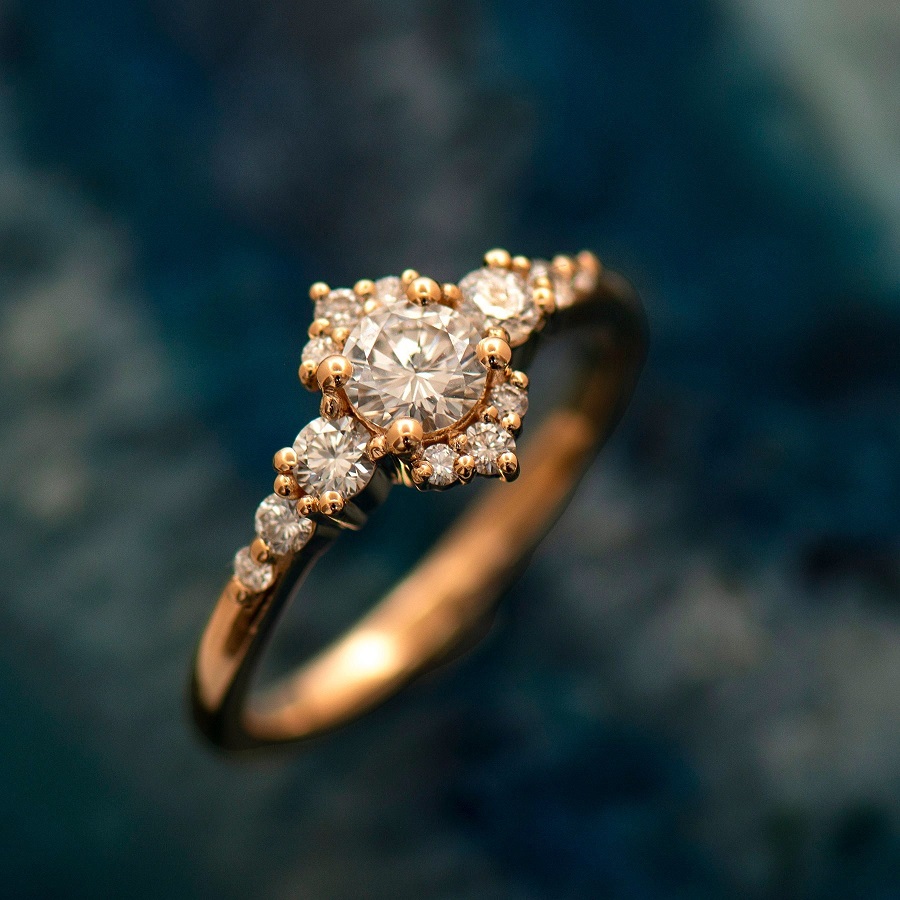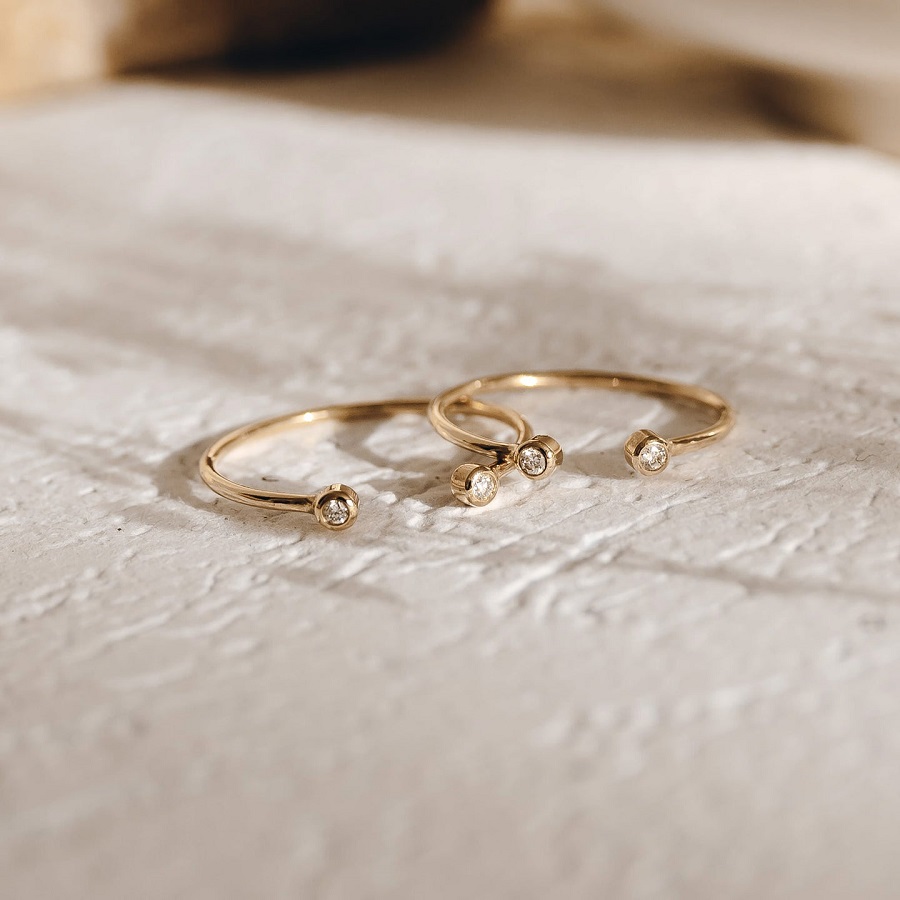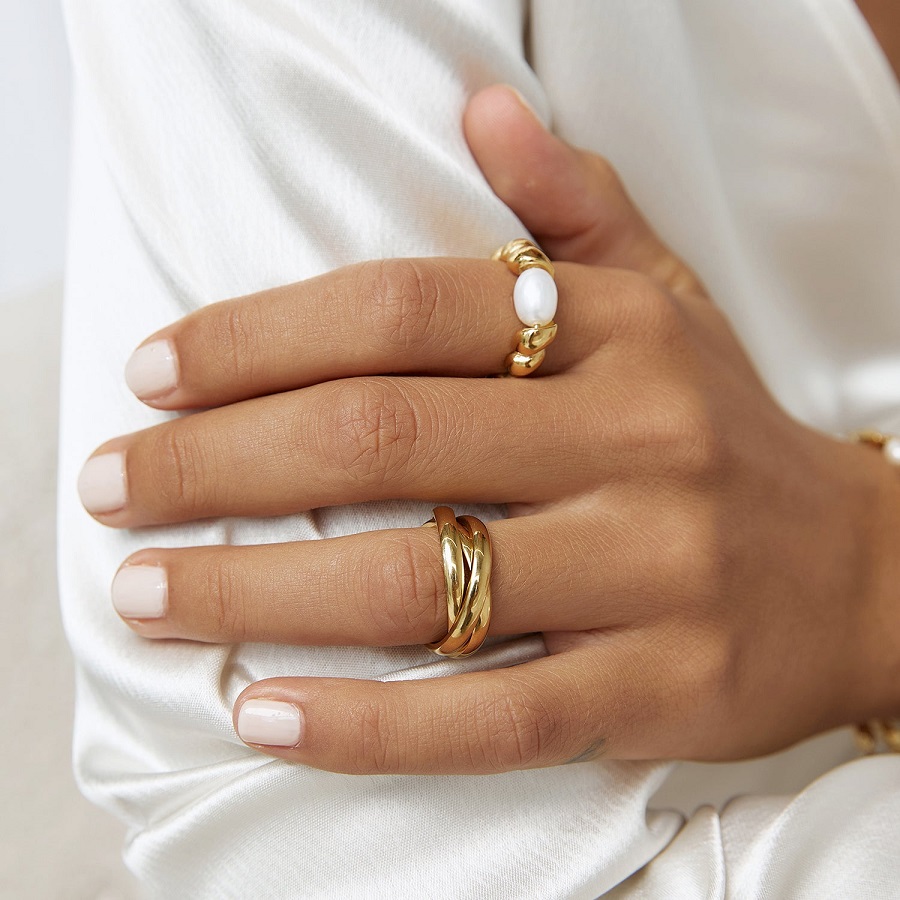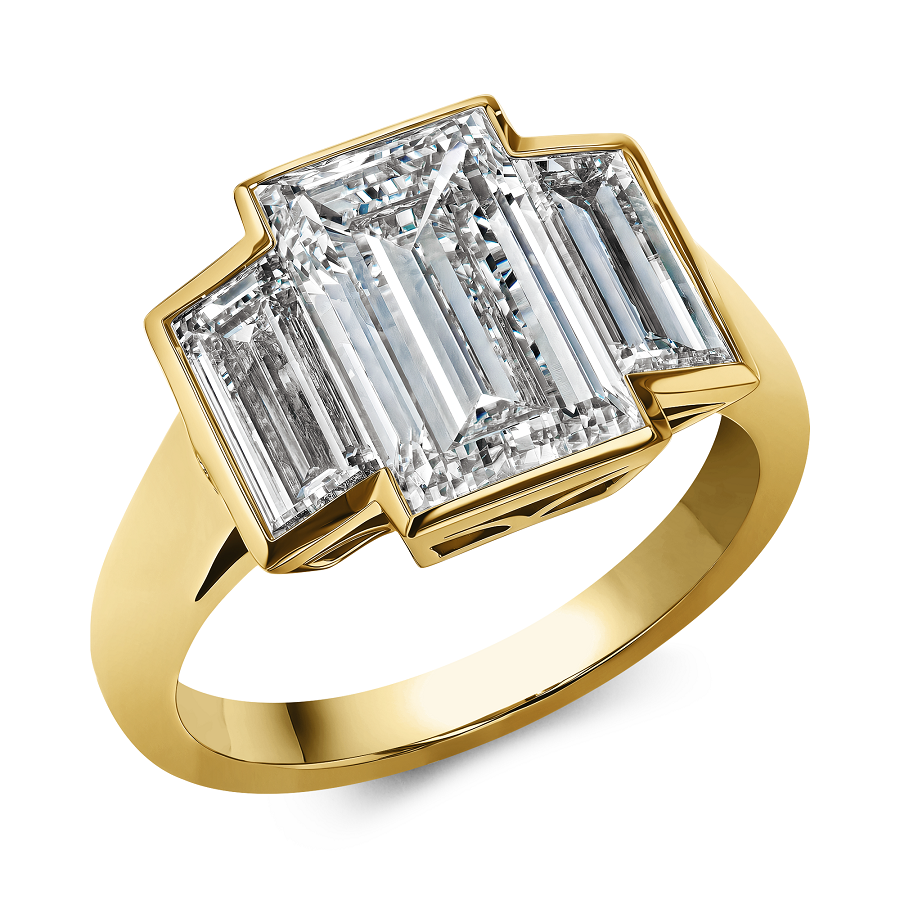Introduction
When it comes to wedding rings, traditions and customs vary significantly across cultures and religions. One of the most common questions couples face is: “On which hand should we wear our wedding rings?” The answer to this question depends on various factors, including cultural norms, historical significance, and personal preferences. In this article, we will explore the different traditions surrounding which hand to wear wedding rings on and the meanings behind them.

The Western Tradition: Left Hand
In many Western countries, including the United States, Canada, and the United Kingdom, the wedding ring is traditionally worn on the left hand, particularly on the fourth finger, commonly referred to as the “ring finger.” This practice dates back to ancient times, when it was believed that a vein in the ring finger, known as the “vena amoris,” (Latin for “vein of love”) led directly to the heart. Wearing the wedding ring on this finger symbolizes a deep emotional bond between partners.
Couples in Western cultures often wear a simple band during the engagement, which may be replaced or accompanied by a more elaborate wedding band once the vows are exchanged. The wedding ring is usually worn alone on the ring finger, although many choose to wear both the engagement ring and wedding band stacked together.
The Eastern Tradition: Right Hand
Conversely, in several Eastern European, Middle Eastern, and South Asian countries, the wedding ring is typically worn on the right hand. For instance, countries such as Russia, Greece, and Poland hold this custom in high regard. One possible explanation for this practice is the belief that the right hand symbolizes strength and love.
In many of these cultures, the wedding ceremony may even involve the groom placing the bride’s wedding band on her right hand during the exchange of vows. In some cases, it is common for both partners to wear their wedding rings on the right hand, signifying their union and love for one another.
Dual-Handed Traditions: A Mix of Customs
In certain cultures, personal choice plays a significant role in determining which hand to wear wedding rings on. For example, in some Latin American countries, individuals may choose either hand based on personal or family traditions. Others, particularly in modern societies, may wear their rings on the hand that feels most comfortable.
Interestingly, the dual-handed approach can be seen in the case of some Jewish customs. Traditionally, during a Jewish wedding ceremony, the groom places the ring on the bride’s index finger. After the ceremony, she typically moves the ring to her ring finger or right hand, depending on family customs or personal beliefs.
Cultural Influences and Globalization
As globalization continues to influence our world, the lines between these traditions have blurred. Many couples today are influenced by movies, social media, and international travel, leading to a more open and flexible understanding of wedding ring customs. In multicultural societies, couples may choose to honor both their heritages by incorporating elements from each tradition into their wedding rituals, including the choice of which hand to wear rings on.
Furthermore, with the rise of personalized wedding plans, many couples opt to forgo traditional practices entirely, favoring a style that reflects their unique love story. The choice between left or right hand can serve as a metaphor for the couple’s journey, emphasizing individuality over tradition.
Why It Matters: Significance Beyond the Ring
Ultimately, the hand on which a couple chooses to wear their wedding ring signifies their commitment to one another, regardless of cultural norms. For many, the act of exchanging wedding rings is imbued with deep emotional significance and represents the couple’s bond, love, and shared future.
Personal Preference and Meaning
The most significant factor in deciding which hand to wear a wedding ring on is personal preference. Some couples will choose the hand that feels most comfortable, while others may prefer to adopt or adapt traditional customs. Discussions about these choices can strengthen a couple’s relationship, allowing for open communication about values, expectations, and desires moving forward.
Ultimately, the relationship itself—and the love exchanged between partners—is what truly matters, far beyond any societal expectation.

The Significance of Wedding Rings
Wedding rings symbolize eternal love and commitment between partners. Made from precious metals or adorned with stones, they serve not only as ornamental jewelry but also as reminders of the vows taken during the wedding ceremony. The rings can signify different meanings depending on the customs of a particular culture, representing unity, fidelity, and the journey of life taken together.
Ring Placement: A Worldwide Overview
Left Hand vs. Right Hand
- Western Cultures (North America and Western Europe):
In many Western countries, including the United States, Canada, and the UK, the wedding ring is typically worn on the fourth finger of the left hand. This tradition is rooted in the belief that this finger has a vein that runs directly to the heart, symbolizing love and affection. Engaged individuals usually wear an engagement ring on the same finger, which is sometimes moved to the right hand during the ceremony to accommodate the wedding ring. - Eastern Europe:
Many Eastern European countries, including Russia and Poland, generally follow a similar custom to the West, wearing the wedding ring on the left hand. However, in some areas, there is a strong preference for the right hand. For example, in Ukraine, it is common for both engagement and wedding rings to be placed on the right hand. - Middle Eastern Cultures:
In various Middle Eastern countries, like Turkey and Egypt, the wedding ring is customarily worn on the right hand. The significance behind this practice varies, with some believing it represents the couple’s allegiance to their families and faith. - South Asian Countries:
In countries like India and Pakistan, wedding ceremonies often involve the exchange of multiple types of rings. Such as the ‘mangalsutra’ in Hindu weddings, which is not only a ring but also symbolizes marriage itself. The placement can vary based on community, family traditions, and personal preference. - Latin America:
In Latin American cultures, particularly in countries like Brazil and Mexico. Wedding rings are often worn on the right hand during the engagement period. After the wedding, they may be moved to the left hand. Although some couples may continue to wear them on the right side.
Additional Cultural Nuances
In addition to ring placement, the customs surrounding wedding rings are rich and diverse.
- Type of Ring:
Some cultures have specific types of rings that they exchange during the wedding. For example, in Jewish traditions, the wedding band is often a simple, unadorned ring symbolizing the perfection of love. In contrast, East Asian traditions sometimes incorporate gemstones or intricate designs that reflect familial lineage. - Wearing of Rings:
In many cultures, it is not uncommon for men to forego wearing rings after marriage compared to women. In some societies, marriage is viewed as a commitment that is primarily signified by the woman wearing the ring. - Rituals Associated with Rings:
In various cultural contexts, additional rituals encapsulate the exchange of rings. For instance, in Filipino culture, couples engage in a ritual called the “veil and cord,” where a cord is placed around the couple to signify their union. And rings are exchanged to mark the sacredness of their vows.
Modern Trends and Globalization
With increased globalization, many couples are blending traditions from different cultures. This cross-cultural phenomenon often leads couples to choose a ring placement or design that reflects their individuality, heritage. And the values they want to uphold in their marriage.
Social media platforms, particularly Pinterest and Instagram. Showcase diverse wedding ring customs, allowing couples from different backgrounds to explore and adopt various practices. Thus further enriching the cultural tapestry surrounding wedding rings.
Conclusion
Understanding the various traditions associated with wedding rings can illuminate the significance behind this cherished piece of jewelry. Whether worn on the left hand, the right hand, or even both. The important thing is the love and commitment it symbolizes. As couples navigate their unique paths, they can choose to incorporate traditions that resonate with them. Creating a wedding experience as distinct as their love. Remember, there are no hard and fast rules. It’s about what feels right for you and your partner in celebrating your lifelong commitment to one another.
